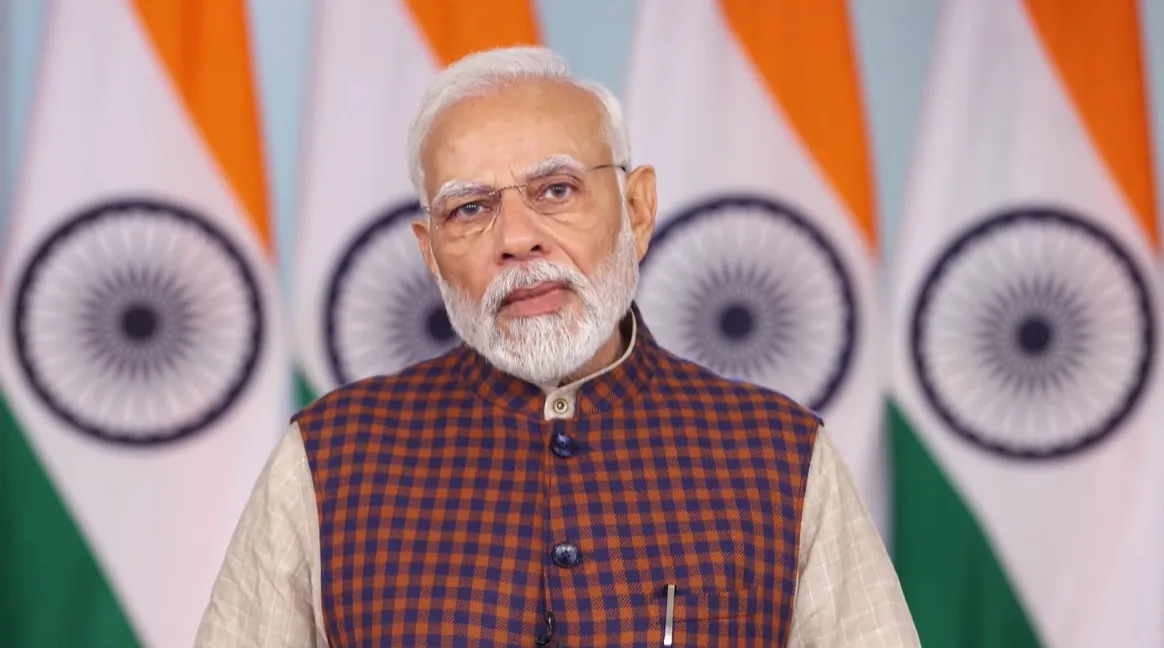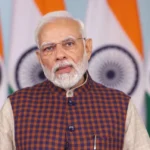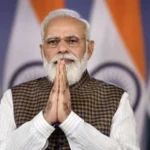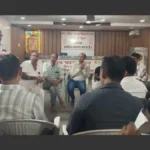Prime Minister Narendra Modi has asked engineers working on the Mumbai-Ahmedabad bullet train project to document their experiences, which will be useful in planning and implementing similar projects elsewhere.
Modi was interacting with engineers and other workers of the Mumbai-Ahmedabad High Speed Railway (MAHSR) project in Surat on Saturday.
Prime Minister Modi said that if the experiences gained from the project are recorded and compiled like a ‘blue book’, the country could move decisively towards large-scale implementation of bullet trains. He stated that India should avoid repeated experimentation and instead replicate lessons learned from existing models.
Modi emphasized that replication would only be meaningful when there is clear understanding of why certain steps were taken. He cautioned that otherwise, replication could occur without purpose or direction.
He suggested that maintaining such records would benefit future students and contribute to nation building. The Prime Minister said, “We will dedicate our lives here and leave something valuable for the country.”
Modi inquired about the project’s progress, including adherence to speed and schedule targets.
A statement issued by the Prime Minister’s Office said that workers assured him the project was progressing smoothly without any difficulties.
An engineer from Kerala shared her experience working at the Noise Barrier Factory in Navsari, Gujarat, where robotic units are being used for rebar welding.
Modi asked her how she personally viewed the experience of building India’s first bullet train and what she shares with her family about this historic achievement. She expressed pride in contributing to the country’s first bullet train and described it as a “dream project” and “moment of pride” for her family.
Reflecting on the spirit of national service, the Prime Minister emphasized that when the feeling of working for the nation and contributing something new awakens, it becomes an immense source of inspiration.
He compared this to India’s space journey, recalling how scientists who launched the country’s first satellite must have felt, and how hundreds of satellites are being launched today.
Another employee from Bengaluru, working as Chief Engineering Manager, explained about rigorous design and engineering control processes. She highlighted that at every stage of implementation, her team evaluates advantages and disadvantages, identifies solutions, and explores options to ensure flawless implementation.
The MAHSR project is approximately 508 kilometers long, with 352 kilometers in Gujarat and Dadra & Nagar Haveli, and 156 kilometers in Maharashtra. This corridor will connect major cities including Sabarmati, Ahmedabad, Anand, Vadodara, Bharuch, Surat, Bilimora, Vapi, Boisar, Virar, Thane, and Mumbai, representing a transformative step in India’s transportation infrastructure.
The statement said that built with advanced engineering techniques conforming to international standards, approximately 85% of the route (465 kilometers) is on viaduct, ensuring minimal land disruption and enhanced safety. So far, 326 kilometers of viaduct work has been completed and 17 out of 25 river bridges have been constructed.
Upon completion, the bullet train will reduce travel time between Mumbai and Ahmedabad to approximately two hours, revolutionizing inter-city travel by making it faster, easier, and more comfortable.
The project is expected to boost business, tourism, and economic activities along the entire corridor and accelerate regional development.






